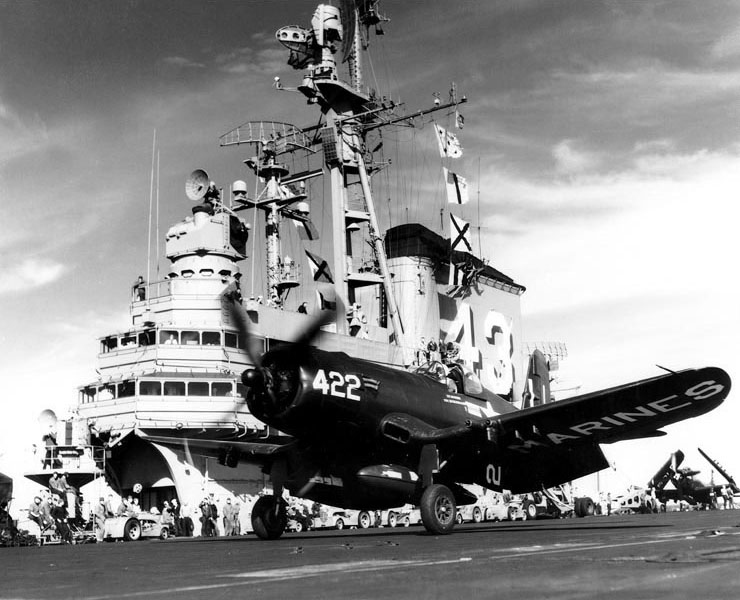F4U Corsair was a military airplane used by the United States and its allies during World War II (1939-1945) and the Korean War (1950-1953). The F4U was a single-engine fighter (fast-flying airplane with weapons) designed by the Chance Vought Corporation. F was the U.S. Navy’s designation for a fighter plane. U was a naval code for Vought aircraft. The F4U Corsair was one of the most famous fighters of World War II. Corsair is another word for pirate or pirate ship.

The F4U had a large central propeller and an inverted gull wing design. The wings angled down from the body of the aircraft and then curved upward. Seen from the front, the plane’s shape resembled a flattened W. Short, stout landing gear—suited for rough landings on aircraft carriers—was attached at the bottom points of the W. The angled wing design kept the plane’s propeller a safe distance above the ground despite the short landing gear.
The Corsair was known for its firepower, ruggedness, and speed. Most F4U’s carried one pilot and six heavy machine guns. Some carried four rapid-fire cannons instead of machine guns. Later F4U’s had rockets or bombs for ground attacks. An engine by the Pratt and Whitney Company gave the plane a top speed of over 400 miles (640 kilometers) per hour. The F4U’s maximum altitude was over 36,000 feet (11,000 meters). Its range with a drop tank (exterior fuel tank attached beneath the plane’s body) was over 1,500 miles (2,400 kilometers). The plane was designed for carrier service, but many F4U’s operated from U.S. Marine Corps island bases.
The Chance Vought Corporation first tested F4U’s in 1940. The fighters first entered combat with the Marine Corps in the South Pacific in February 1943. Navy F4U’s entered combat in October. Corsairs began flying with the United Kingdom’s Royal Navy and the Royal New Zealand Air Force in 1944.
During World War II, F4U’s flew primarily in the Pacific against Japan. They enjoyed great success in air-to-air combat, destroying 11 Japanese planes for each Corsair lost. Their ability to carry bombs, rockets, and napalm (a jellylike explosive) also made them effective in ground attacks. The planes provided crucial air support for a number of assaults on Japanese-held islands.
During the Korean War, F4U’s flew thousands of combat missions, mainly in ground attack roles. Corsairs also fought for the French in conflicts in Algeria and Indochina (present-day Cambodia, Laos, and Vietnam).
A total of 12,571 F4U’s were built between 1942 and 1952. The last U.S. Navy and Marine Corps Corsairs were retired in 1957. Corsairs served in foreign air forces until 1979.
See also Aircraft, Military ; Fighter plane ; Foss, Joseph Jacob ; World War II (The air war) .
